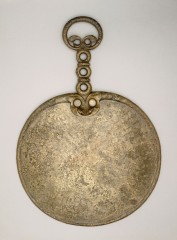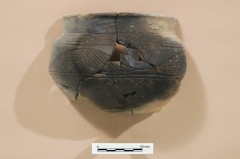Devon’s archaeological resource preserves the evidence that allows us to reconstruct our history from the furthest past to recent periods. Devon possesses material dating from the oldest periods of the occupation of Britain by humans and their predecessors: hand axes and other tools from the Lower Palaeolithic are found in the Axminster area, while the caves of South Devon and Torbay have preserved important evidence from the Lower and Upper Palaeolithic periods.
After the end of the Ice Ages, we see evidence of widespread Mesolithic and Neolithic activity in the form of stone, mainly flint, tools throughout the county, while from the fourth millennium BC onwards we see evidence of the construction of ‘monuments’ in the landscape, such as the causewayed enclosures at Hembury or Hazard Hill, and earthen or stone long barrows. Dartmoor preserves numbers of stone rows and other ceremonial sites dating from the third and second millennia, while Bronze Age round barrows are found both on Dartmoor and elsewhere throughout the county, sometimes in major groups such as those at Farway, East Devon, or Crownhill Down on South West Dartmoor. Evidence of settlements from this period (roughly the second millennium BC) is not extensive except on Dartmoor, where hut circles, both in enclosed groups and scattered individually among the field systems (the Dartmoor ‘reaves’) are widespread.
In the first millennium BC we see the construction of the great Iron Age hill forts, such as Hembury and Clovelly Dykes, while recent aerial reconnaissance and geophysical survey by Devon County Council and others have greatly increased the number of smaller enclosed settlements known. Many of these lie in the farmed lowlands of Devon and survive only below ground because of the impact of cultivation. Many of these continued to be occupied after the arrival of the Romans, and they continued to be built after the Roman Conquest.
Find out more about these sites by viewing the Devon Historic Environment Record.
Further information about some of the fascinating prehistoric sites in Devon is available, of particular relevance to people teaching prehistory.

